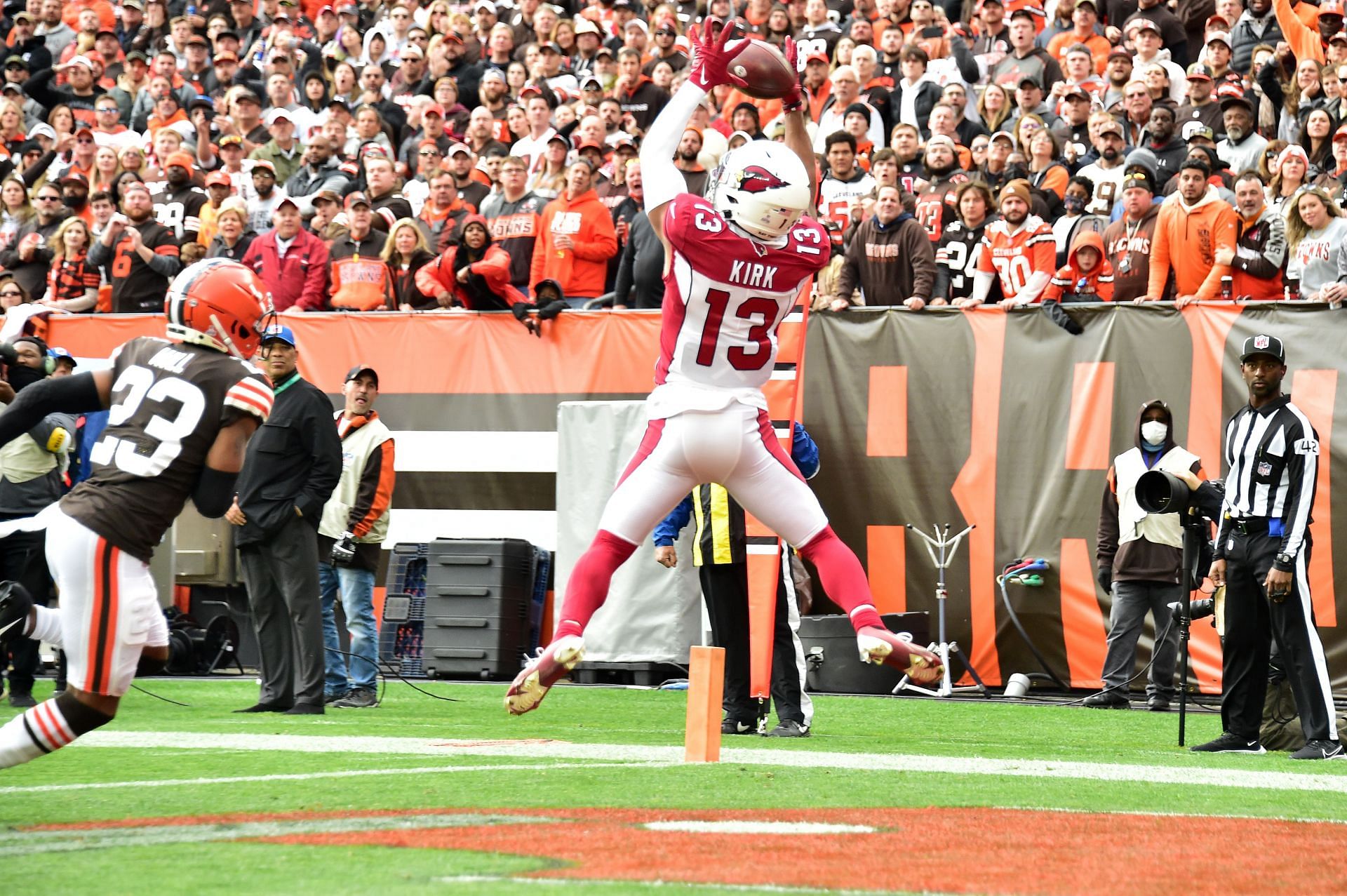
The Wide Receiver Era in the NFL is Here

No one will question that the position of quarterback is and has always been the most important position in the NFL. No other position can quite determine a franchise's fortunes in the way quarterback play can. Behind that, however, a few skill positions can stake claim to the title of "Next Most Important."
Left-tackles, edge-rushers and cornerbacks are all skill groups that have been viewed as most vital after the quarterback at various points in the past. As the league has gravitated toward a more pass-oriented style of play, the value of wide receivers has begun to be recognized.
When Jacksonville Jaguars general manager Trent Baalke decided to sign former Arizona Cardinals wide receiver Christian Kirk to a four-year contract worth up to $84 million that would net the receiver about $18 million a year, he set in motion a chain of events that broke the wide receiver market and will have far-reaching implications for years to come.
The Wide Receiver Boom in the NFL
Kirk was viewed as a player with the potential to, one day, join the NFL's group of elite receivers but still had some way to go. In his four seasons in the league, he has yet to eclipse 1,000 receiving yards and the most touchdowns he has recorded in a season have been six.
The Jaguars' decision to make Kirk one of the ten highest-paid receivers in the NFL shifted the power of balance in the hands of wide receivers when it came to contract negotiations. The elite receivers decided they were worth a lot more than usual in the context of the Kirk deal and got paid accordingly.
Davante Adams was the first domino to fall and was traded to the Las Vegas Raiders, who signed him to a five-year deal worth $141.25 million. Tyreek Hill upped his demands in negotiations with the Kansas City Chiefs and was ultimately traded to the Miami Dolphins, who were offering him a four-year $120 million deal which the Chiefs were unwilling to match.
In the days to come, Stefon Diggs would re-sign with the Buffalo Bills on a four-year, $96 million deal. The dealing continued into draft night when AJ Brown was not satisfied with the $20 million a year deal offered by the Tennessee Titans and was traded to the Philadelphia Eagles, who instantly announced a four-year $100 million extension for the receiver.
The Kirk deal may have led to a windfall for receivers across the league, but in many ways, this offseason has been the culmination of a trend that has seen NFL teams value the position more highly. Teams have looked to surround their quarterbacks with as much talent as possible, and in response, defensive co-ordinators have designed gameplans to specifically negate star receivers.
Every year, a deeper and more skilled wide receiver class is available in the draft, and teams have moved quickly to snap up their targets. The last three years have seen, at least, five receivers drafted in the first round. Prior to that, the last time five or more receivers were drafted in the first round was in 2015.
The results have been undeniable as well. Most analysts were of the opinion that the Cincinnati Bengals needed to address their offensive line with their fifth pick. The Bengals, instead, chose to reunite Joe Burrow with his LSU receiver Ja'Marr Chase and rode the duo all the way to the Super Bowl. Cooper Kupp was named Super Bowl MVP in February this year after he willed the Los Angeles Rams to the title with a brilliant showing in the fourth quarter of a tight game.
The wide receiver era has truly arrived in the NFL, and receivers will shape the landscape of the league in the years to come. With the continued influx of top talent into the league and lucrative contracts for veterans in the position, there has never been a better time to be a receiver in the league.
